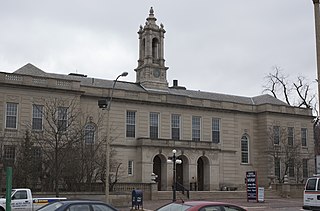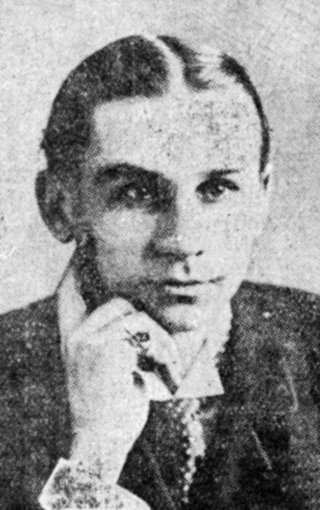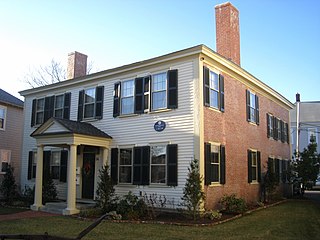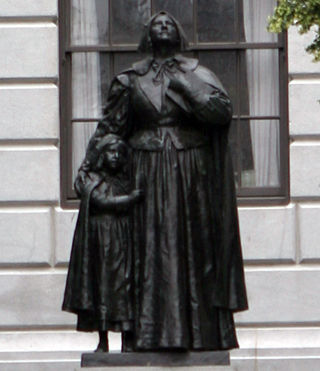
Arlington is a town in Middlesex County, Massachusetts, United States. The town is six miles (10 km) northwest of Boston, and its population was 46,308 at the 2020 census.

Cyrus Edwin Dallin was an American sculptor best known for his depictions of Native Americans. He created more than 260 works, including the Equestrian Statue of Paul Revere in Boston; the Angel Moroni atop Salt Lake Temple in Salt Lake City; and Appeal to the Great Spirit (1908), at the Museum of Fine Arts, Boston. He was also an accomplished painter and an Olympic archer.

The Jason Russell House is a historic house in Arlington, Massachusetts, the site of the bloodiest fighting on the first day of the American Revolutionary War, April 19, 1775. The house was purchased in 1923 by the Arlington Historical Society which restored it in 1926, and now operates it as a museum from mid-April through the end of October, together with the adjoining Smith Museum, built in 1981 to house changing exhibitions of life in Arlington.
Arlington High School is a public high school located in Arlington, Massachusetts. As of 2022, the school enrolled 1,483 students.

Richard Clipston Sturgis, generally known as R. Clipston Sturgis, was an American architect based in Boston, Massachusetts.

Appeal to the Great Spirit is a 1908 equestrian statue by Cyrus Dallin, located in front of the Museum of Fine Arts, Boston. It portrays a Native American on horseback facing skyward, his arms spread wide in a spiritual request to the Great Spirit. It was the last of Dallin's four prominent sculptures of Indigenous people known as The Epic of the Indian, which also include A Signal of Peace (1890), The Medicine Man (1899), and Protest of the Sioux (1904).

Holyhood Cemetery is a cemetery located in Brookline, Massachusetts.

The Uncle Sam Memorial Statue is a statue commemorating Samuel Wilson, perhaps the original Uncle Sam, near his birthplace in the center of Arlington, Massachusetts, United States. It was sculpted by Theodore Cotillo Barbarossa. It is located on Mystic Street, across from the Cyrus Dallin Art Museum, and adjacent to the Minuteman Bikeway.

The Pleasant–High Historic District encompasses the earliest area of non-agricultural residential development in Methuen, Massachusetts. It encompasses houses along High and Pleasant Streets from just east of Broadway to Vine Street, as well as a few that face on adjoining streets. The district was listed on the National Register of Historic Places in 1984; on its western boundary it abuts the Spicket Falls Historic District.

The Bow Street Historic District encompasses a mixed 19th-century commercial-residential in the Union Square area of Somerville, Massachusetts. It covers a part of the west side of Union Square that saw significant development during the city's growth in the 19th century, and has remained well-preserved since then. The district was added to the National Register of Historic Places in 1976.

The Butterfield-Whittemore House, is a historic colonial house at 54 Massachusetts Avenue in Arlington, Massachusetts. With its oldest section dating to c. 1695, it is one of the town's oldest houses, and may be its oldest. It was listed on the National Register of Historic Places in 1978.

The Ephraim Cutter House is a historic house at 4 Water Street in Arlington, Massachusetts. Built about 1804 by one of the town's leading mill owners, it is one of Arlington's few surviving Federal period houses. It was listed on the National Register of Historic Places in 1978, and included in an expansion of the Arlington Center Historic District in 1985.

The Highland Hose House is a historic fire station at 1007 Massachusetts Avenue in Arlington, Massachusetts. The two story brick building was built in 1928 to a design by George Ernest Robinson. His Georgian Revival design emulates features found in Boston townhouses of the late 18th and early 19th centuries, and its cupola and grasshopper weathervane resemble that of Faneuil Hall. The station includes a bronze relief of former Chief Charles Goff, executed by noted Arlington resident Cyrus Dallin.

The Taylor-Dallin House is a historic house in Arlington, Massachusetts. The house is notable as being the home of sculptor Cyrus E. Dallin (1861–1944) from 1899 until his death. It is a Colonial Revival/Shingle style 2+1⁄2-story wood-frame structure, with a hip roof studded with dormers, and a front porch supported by Tuscan columns. The house was built c. 1898 by Jack Taylor and sold to Dallin in 1899. Dallin's studio, no longer extant, stood in the rear of the property. Dallin was one of Arlington's most well-known citizens of the early 20th century, and his sculptures are found in several public settings around the town.

The Dallin House is a historic residence in Springville, Utah, United States. It was listed on the National Register of Historic Places in 1994.

The Cyrus Dallin Art Museum (CDAM) in Arlington, Massachusetts, United States is dedicated to displaying the artworks and documentation of American sculptor, educator, and Indigenous rights activist Cyrus Dallin, who lived and worked in the town for over 40 years. He is well known for his sculptural works around the US including The Scout in Kansas City, Missouri, TheSoldiers' and Sailors' Monumentin Syracuse, New York and The Signal of Peace in Chicago. Locally, he is best known for his iconic Appeal to the Great Spirit and Paul Revere Monument statues, both located in Boston.

A statue of Anne Hutchinson by Cyrus Edwin Dallin is installed outside the Massachusetts State House, in Boston, Massachusetts, United States.

The Menotomy Hunter (1911) is a sculpture by Cyrus E. Dallin in Arlington, Massachusetts, showing a Native American hunter pausing at a brook for a drink of water located in the Arlington Center Historic District. The sculpture resides at the center of the garden between the Robbins Memorial Town Hall and the Robbins Memorial Library, on a crest above a long, shallow reflecting pool. The man is equipped for a hunt, holding a bow. His catch for the day, a goose, rests by his foot.

The Robbins Memorial Flagstaff (1913) is a structure supporting and topping a flagpole in Arlington, Massachusetts created by Cyrus Dallin. The supporting sculpture includes a variety of sculptural elements including bronze figures, stone eagles, and snapping turtles with a finial representing American Agriculture. The sculpture resides to the west of Town Hall at 730 Massachusetts Avenue.

Boy and His Dog Sculpture or Storrow Memorial is a 1923 statue by Cyrus Dallin, located in a prominent location in Lincoln Cemetery. It portrays a young man bending down to pick a flower with a dog gazing up into his visage. It was created at the request of Helen Osborne Storrow as a memorial to her husband James Jackson Storrow. The Storrows are interred 30 feet north of the monument across a small road in a grave overlooking a picturesque pond.































